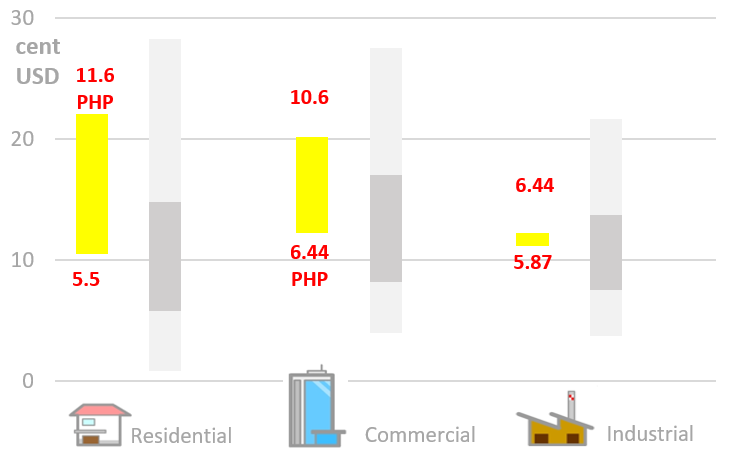The main driver within the Philippine energy sector is to become energy self-sufficient. In 2017, the share of imported energy amounted to 44.7% (Department of Energy Philippines). Hence, the security of energy supply is the major concern that defines the national energy policy. The government plans to increase the investment into the exploitation of the domestic fossil fuel resources, while simultaneously introducing the RE sources into the national energy mix.
The Philippine Energy Plan (2017-2040) defined several policy goals: to ensure energy security, to expand energy access, to promote low-carbon, to strengthen collaboration among all government agencies involved in energy, to integrate sectoral and technological roadmaps, to advocate the passage of the department’s legislative agenda, to strengthen consumer welfare and protection and to foster stronger international and partnerships. In the field of electricity regulation, the National Electricity Industry Reform Act from 2001 establishes a framework for a more competitive electricity market. The main goal is to separate the generation, transmission, distribution and supply of energy.
Another important policy is the Renewable Energy Act of 2008 (R.A. No. 9513), which establishes a policy framework for RE development. For the on-grid RE systems, the act paves the way for feed-in tariffs, renewables portfolio standard (RPS), renewable energy market (REM), and net metering. On the off-grid side, RE is aimed to be used as a tool for rural electrification. The National Renewable Energy Board (NREB) was established by this act to support the Department of Energy (DOE) in the RE sector. Moreover, the Renewable Energy Trust Fund (RETF) was also established by the RE Act. The administration is executed by the DOE and the utilization of fund is monitored by NREB. Moreover, in 2013 Energy Regulatory Committee issued the Resolution No. 7 adopting changes to the Philippine Grid Code, in order to accommodate for the Variable Renewable Energy (vRE) generating facilities.
 Source: Meralco website [Accessed: December 2018]
Source: Meralco website [Accessed: December 2018]